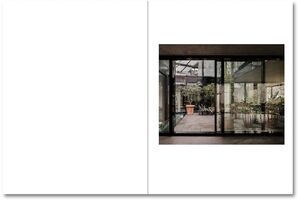Contact
art book cologne GmbH & Co. KG
Deutzer Freiheit 107
50679 Köln
Germany
Opening hours (office and showroom):
Monday to Friday 8 – 17
info@artbookcologne.de
Phone: +49 221 800 80 80
Fax: +49 221 800 80 82
About us
art book cologne, founded by Bernd Detsch in 1997, is a wholesale company and specializes in buying and selling high quality publications in art, art theory, architecture, design, photography, illustrated cultural history and all related subjects internationally. Our team includes specialists in art, culture, music, book trade and media but in spite of our diversity we have one common ground: the enthusiasm for unique art books.
We purchase remaining stocks from museums, publishers and art institutions. We sell these remainders to bookstores, museum shops, and art dealers all over the world.
Daisuke Hirabayashi – Koechlin House
| Dealer Info | 1 copy 30% discount | 2+ cps. 40% discount |
| Publisher | MACK Books |
| Year | 2023 |
| Cover | otabind softcover |
| Language | English |
| ISBN | 978-1-915743-17-6 |
| Pages | 128 |
| Weight | 900 g |
| More | |
| Article ID | art-60013 |
This book by photographer and architect Daisuke Hirabayashi is a meditation on the often overlooked lives of buildings after the architect has left. Through a sequence of intimate, immersive images, Hirabayashi explores Koechlin House, an early private home designed by now-celebrated architects Herzog & de Meuron in Basel, Switzerland. His images picture the house as a site of everyday life, with all its small joys, surprises, awkward infelicities, rituals, and revelations. The original clients left long ago, and this book quietly studies the current owner’s unplanned, harmonious occupation.
The Koechlin House was designed ‘inside out’, prioritising the experience of the interior home over its outward-facing appearance. In this sense, Hirabayashi works in the spirit of the building, centring the embodied experience within and disregarding the omniscient and dehumanised view prevalent in so many accounts of architecture. Alongside a text by architects and writers Ellena Ehrl and Tibor Bielicky, these images encourage us to rethink the perspectives and details we deem ‘architectural’ and leave us newly aware of the long and many-storied lives of buildings.
















